Minecraft is one of the most recognizable IPs in all of gaming, not only for its distinct blocky art style, but also because of the over 100 million people that have played it. Since its inception way back in 2011, there have been a few attempts to spin off the franchise into different gaming genres. Past attempts were made, such as Minecraft Story Mode from TellTale games turning Minecraft into a story-driven adventure game, and Minecraft Dungeons turning it into an isometric action-RPG. What both of these games had in common, though, is that they were merely Minecraft-skinned versions of games within their genres.
But what would happen if there was a game that could offer a new way to play within the Minecraft world but also stay true to many of the core tenets of Minecraft that millions of people fell in love with? Well, the team at Blackbird Interactive seems to have asked themselves that very question, and Minecraft Legends is their answer.
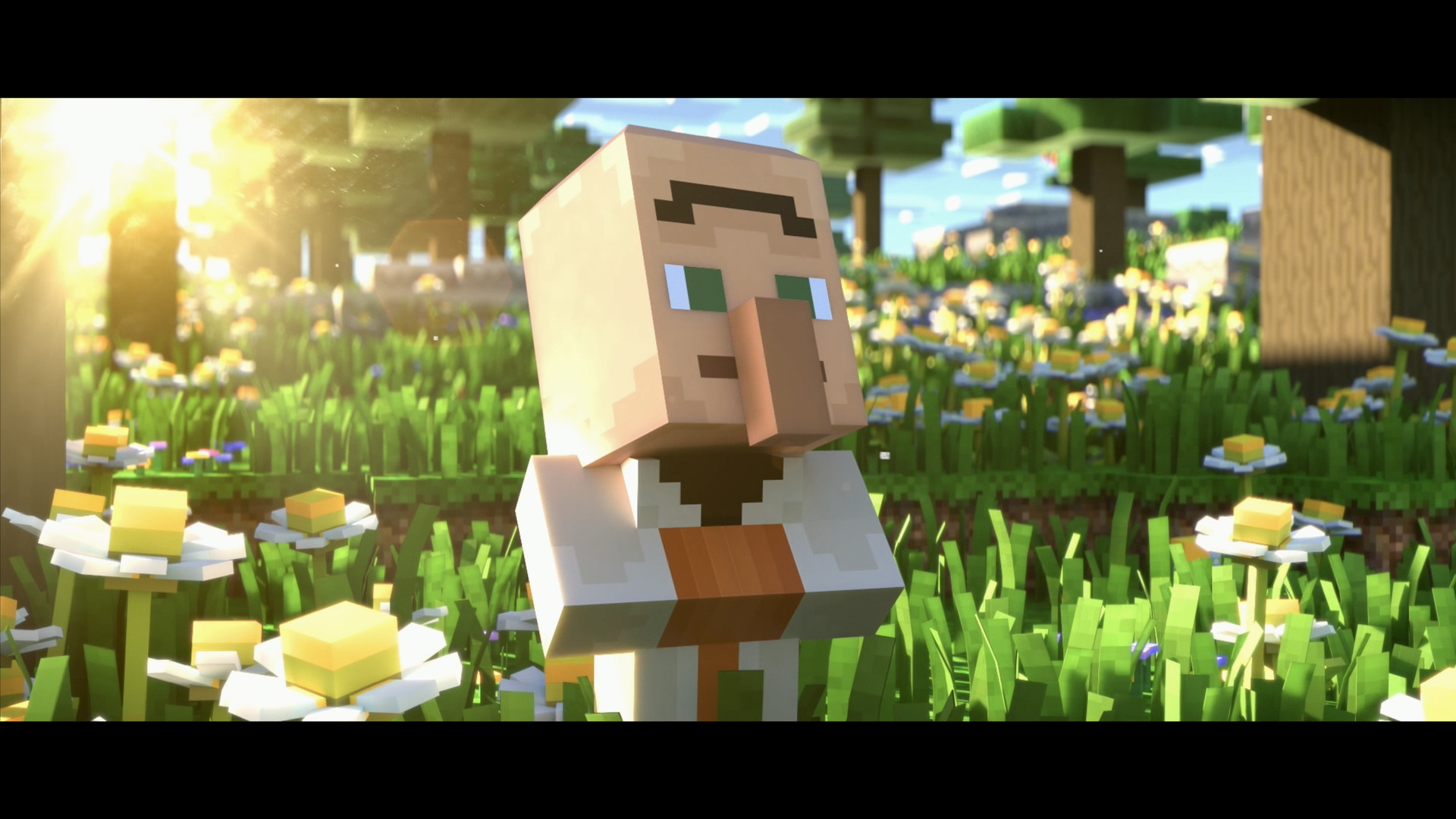
New Dog, New Tricks
Minecraft Legends is an interesting Action-RTS hybrid where, just like the original Minecraft, mining minerals from the game’s blocky world to build structures is key. However, unlike the original Minecraft, you will also be in control of legions of different creatures that you can use to attack enemies and the structures they built. Because, also unlike the original Minecraft, the world has been completely overrun by evil Piglins that have used strange portals to leave The Nether, and it’s up to you to stop them.
Fret not, though, since you are not alone in this quest as the guardian spirits of the Minecraft world have given you a mystical lute used to inspire the creatures around you, as well as the banner of courage to command them.

The basic concept of Legends is to protect your base while taking out the bases of your enemies, be it Piglins or other players (something we will dive deep into later). The general game play loop sees you controlling your own Hero character in third person. Unlike many other RTS games which set you in a top down, isometric view, Legends ops to keep you close to the action since the developer felt this would help the game feel more natural on a controller. As you roam around the world, you will use your trusty lute to command your allies to do your bidding. Directing them is a bit overwhelming at first, but, after a while, I found the control scheme to be quite innovative and user friendly.
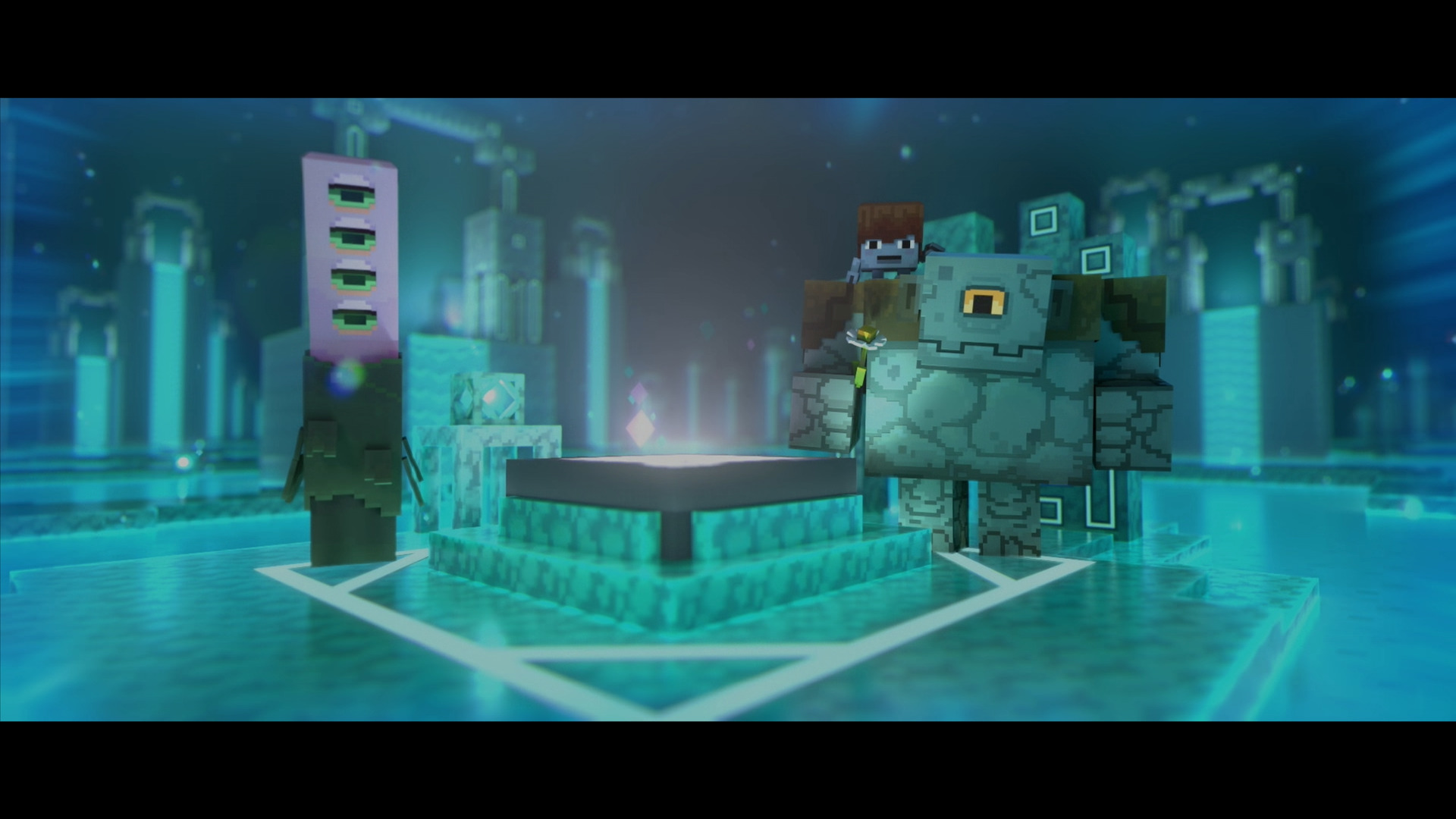
There are effectively four different states your character can be in, each of which is selected by pressing its assigned direction on the D-Pad. When active, each state will change what is selectable in your inventory quick menu at the bottom of your screen, which you can navigate with the left and right bumpers. The Mining state will allow you to select the type of resource you’re after, and, once selected, holding the left trigger will allow you to target a specific area on the ground which contains that mineral. Once selected, after a quick strum of your lute, one of your fairy-like allies, called “Allays,” will begin to mine that resource and add it to your stockpile automatically.

Next, you have the building and improvement states, which operate very similarly. While in Building mode, instead of mineral types in your inventory, you will instead have different structures that you can build. Structures range from fences and gates, to staircases used to reach new heights, to a masonry building that helps reinforce everything. Building is something that can be done on any surface you control or any neutral surface, so its usefulness is not limited to simply base building as it can also factor heavily into your siege tactics.

Upgrade Towers are limited to being built inside of your base, however. This system works by constructing upgrade tower buildings inside of your base while in the upgrade player state. These upgrade towers will provide you with specific tiles which you can build upgrade buildings on, and these buildings range from increasing how much of a specific mineral you can store at once to what kind and how many of each combat unit you can control on the battlefield.

All of these systems flow well together as you need upgrade towers to be able to mine different types of minerals. Minerals are used to build structures in your base, which are used to defend your precious upgrade towers. The more upgrade towers you have, the more unique minerals you can obtain, which directly attributes to how advanced your base can become. All of this cohesive loop comes together for one specific reason, though, and that is to build the biggest and best army that you can.
The Battle of the Blocks
The combat in this game is of the “easy to grasp but difficult to master” category. Entering combat mode will display all of the available units that you have at your disposal. Once selecting them, you can hold LT to select an area to place a spawner down. Plank Golems and Stone Golems are your basic infantry units and cost only wood and stone to create, both of which are the game’s most common resources.
Other units, however, will have a unique resource they require, such as the tanky Zombie requiring Redstone, and the explosive Creeper requiring Coal. However, every unit also requires a material called “Lapis” to summon, which is gained from defeating Piglins or helping villagers.

Once you have your army built, you simply press one button to automatically select them all in an AoE around you and have them follow your commands. Once selected, you can hold RT to enter combat mode, and you only have two basic commands. You can send them to charge in a chosen direction, which is basically an A-Move if you’re an RTS veteran. Or you can target a specific building or enemy and have them focus solely on that.
As a player, though, you generally can charge in with your army and deal some big damage with your own sword to Piglins, players, or creatures to help assist your army. However, only creatures can damage the structures and bases of your foes.
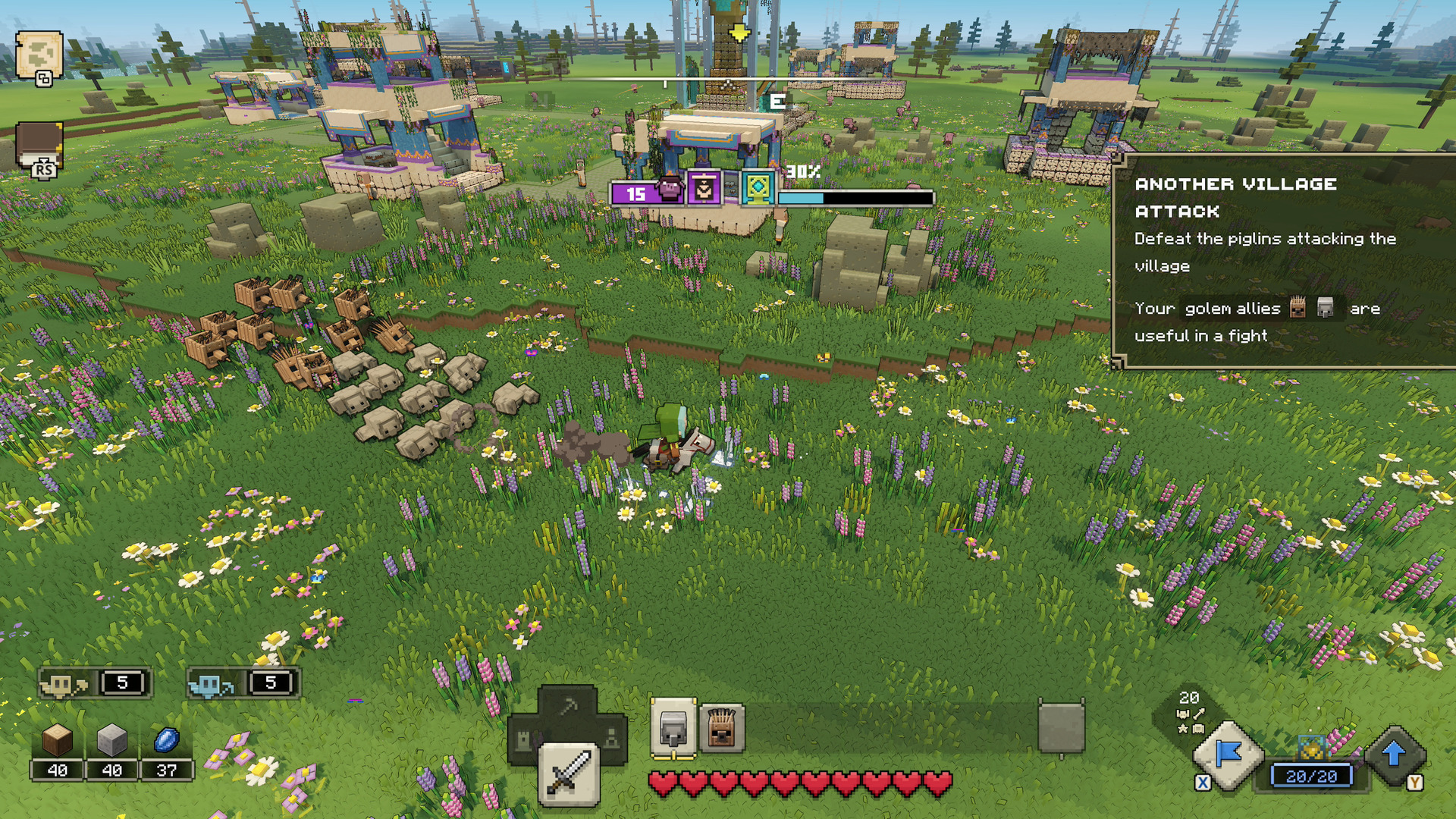
There are a lot of materials, creatures, and buildings to keep track of, and if you jump straight into multiplayer, it will be extremely overwhelming for a new player. However, knowing what each building does, what it costs, and what each combat unit is effective against is absolutely a key to victory.
Thankfully, there is an in-game guide book, called the “song-book,” that will be essential in the early days. The song book shows you everything you can build, what it costs to build, and what they do. As there are more build options in the song book than there are slots in your quick menu, it’s also used to swap things in and out of the quick menu as needed.
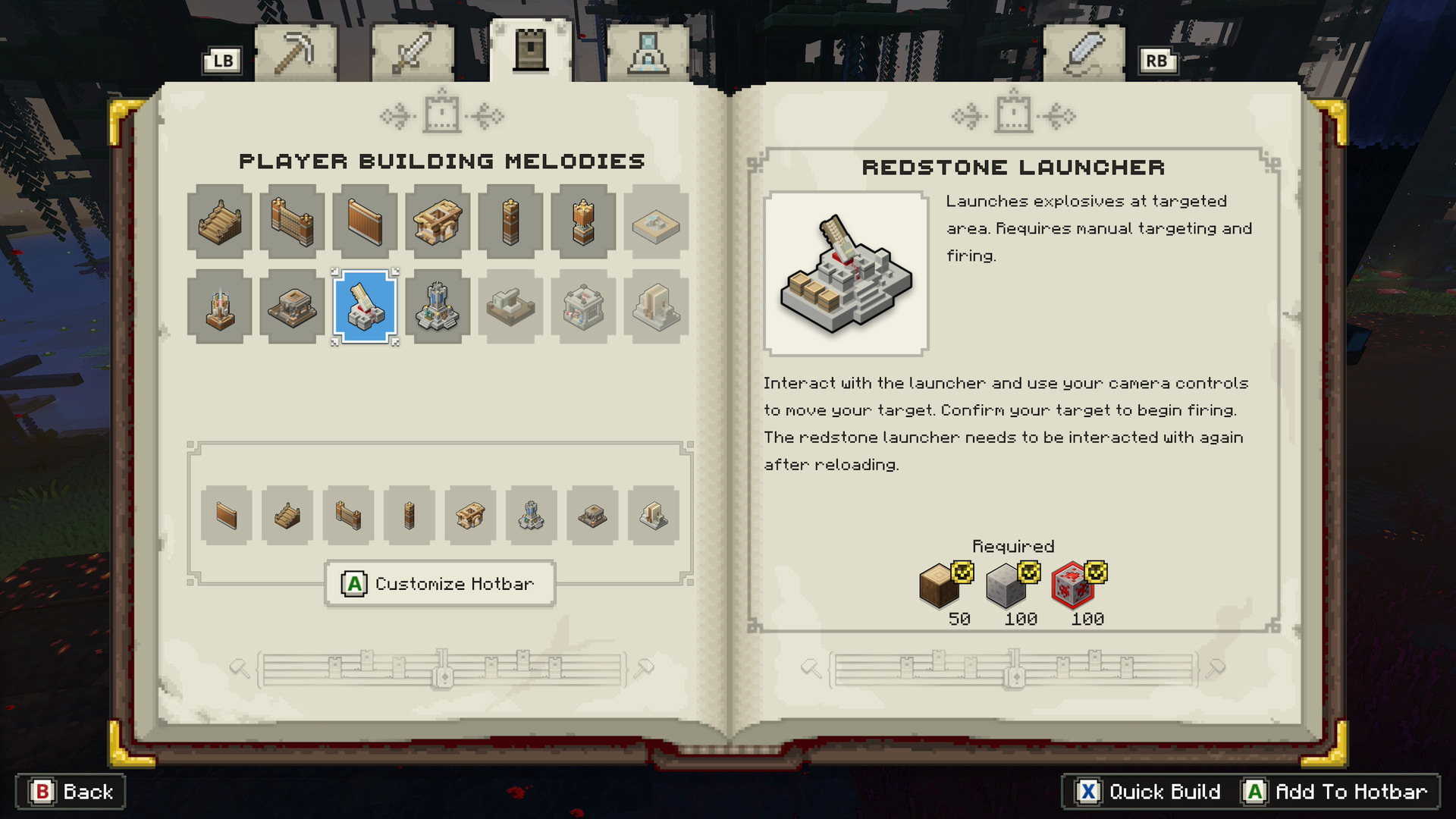
Pre-Game Ritual
There is a much better way than the guide book to learn the ins and outs of the game, though, and that is the game’s lengthy campaign. Having played many RTS campaigns in my lifetime, I was a bit surprised by the campaign in Minecraft Legends. As mentioned at the top of this review, the premise is that Piglins have broken out of The Nether through mysterious portals and are terrorizing the peaceful villagers and animals of The Overworld. However, what surprised me is that there are no levels to complete as everything takes place in one big open world.
In fact, the closest thing I could compare it to mechanically is a modern Far Cry game. There are three unique Piglin hordes: The Horde of Bastion, Spore, and The Hunt. They each have a unique leader and have taken over parts of The Overworld map, and a final boss is in control of everything. Once you get through a brief introduction sequence, your main objective is to take down those Horde bases. On top of this, there are several side objectives for you to conquer as well.

Each side objective tends to teach you a new game play mechanic, such as how saving a village from Piglins will teach you how to build a Carpenters Hut, which will passively repair damaged structures in its vicinity. Another mission may have you rescue the Zombie village from a Piglin attack, leading to you finding out the strengths and weaknesses of Zombies and having them join your forces. Even taking out a Piglin Horde’s base comes with some lessons, such as how to build ramps to get to higher ground, or what buildings should be targeted first, etc.
The entire campaign plays very much like one giant tutorial. There is a vague story, and it is presented with some nice cut scenes, but I could not shake that “I’m still in a tutorial” feeling until I was nearly at the end of the 18-25 hour campaign. While it is absolutely necessary, as I would never have survived PvP without my time in the campaign, I still wish there was a little bit more here.
Fortunately, though, the campaign is not the end of the PvE experience in Minecraft Legends as you can play the PvP mode against AI. They also have a “Lost Legends & Myths” mode, which offers unique PvE experiences that are said to rotate in and out monthly. The first one, “The Portal Pile,” is akin to a horde mode of sorts and rewards you with a unique cosmetic upon completion. I’m very interested to see how this mode shapes up over the coming months.

Blocks Sweat and Tears
It is ultimately the player vs player mode that the campaign is preparing you for, though, and this mode definitely delivers the goods. The mode is playable with up to 8 players in any configuration you would like, be it 1v1, 2v2, 3v3 or 4v4, though matchmade games will not start until at least 6 players are in the lobby. Each team will spawn on opposite sides of a procedurally generated open game world with a base tower that they will need to protect. From here, you will need to find ways to defend your tower against your enemies and also devise ways to destroy the other team’s tower.

Amongst the largest maps, you will find many zones that each contain different resources which you can choose to gather based on your strategy. The maps are also home to several Piglin bases, which you will need to take down in order to build your own combat units. These places are often contested by the other team and are the grounds for most of the game’s early skirmishes. Given that you can freely roam the game’s world from the very beginning, being able to scout what your enemy is doing, as well as getting the lay of the land, is paramount to devising a strategy and choosing which tech paths to invest in as a team.

Each game typically starts off with players coordinating with each other on who is going to go out and get materials, who is going to find the Piglin bases, and who is going to stay home and build. After you have wiped out a few Piglin forces together and have a rudimentary defense setup at home base, it’s time to start planning your attack. Since, over time, the Piglin attacks on your base get deadlier and you may also get poked at by the other team, my team developed a pretty basic game play strategy when we played.
Whoever was in charge of building would become a team leader of sorts and, with the information from the scouts, decide what materials we should go after. So while the leader tightened up the base defense, they also sent the other players on tasks to collect specific materials. Eventually, when we had enough materials to implement our strategy, everyone on the team began the assault on the other base.
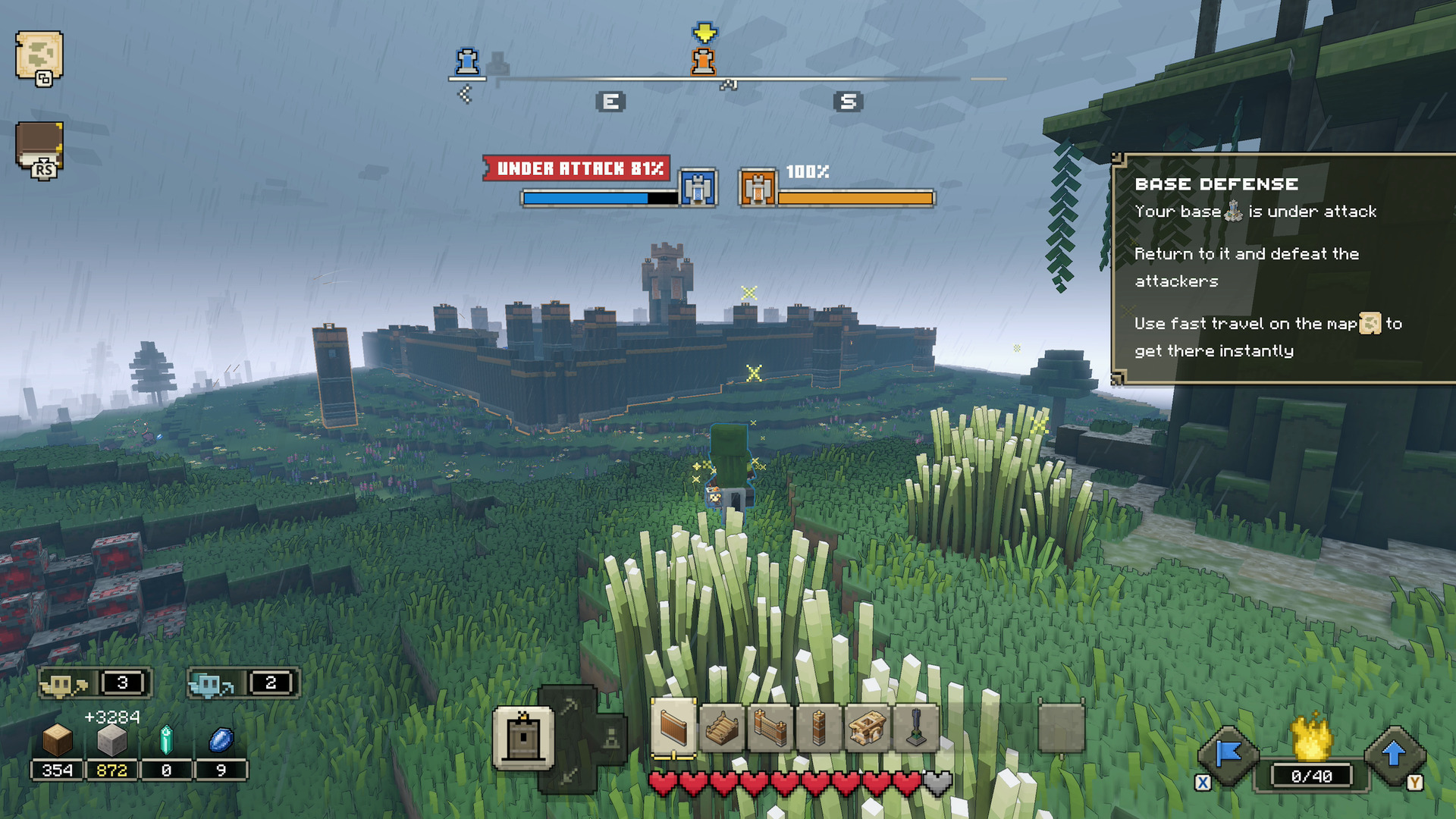
Throughout the review process, I was able to take part in multiple play sessions with other creators as well as several members of the Minecraft Legends PR Team. These sessions were incredibly memorable for me and were a ton of fun. The first match I actually played was a creator vs PR Team grudge match, where I looked into my inner Starcraft nerd bag of tricks and pulled out the old Zerg rush strategy. Running past all of the action at the Piglin base, I ran directly to their unguarded base and sent in a small army of Stone Golems which went unnoticed and ended the game in just five minutes.
The second game was an epic 1 hour and 4 minute battle which had both teams fending off several close calls, including someone on the PR team building a Redstone launcher on top of a cliff beside our base, raining down destruction from the skies above.
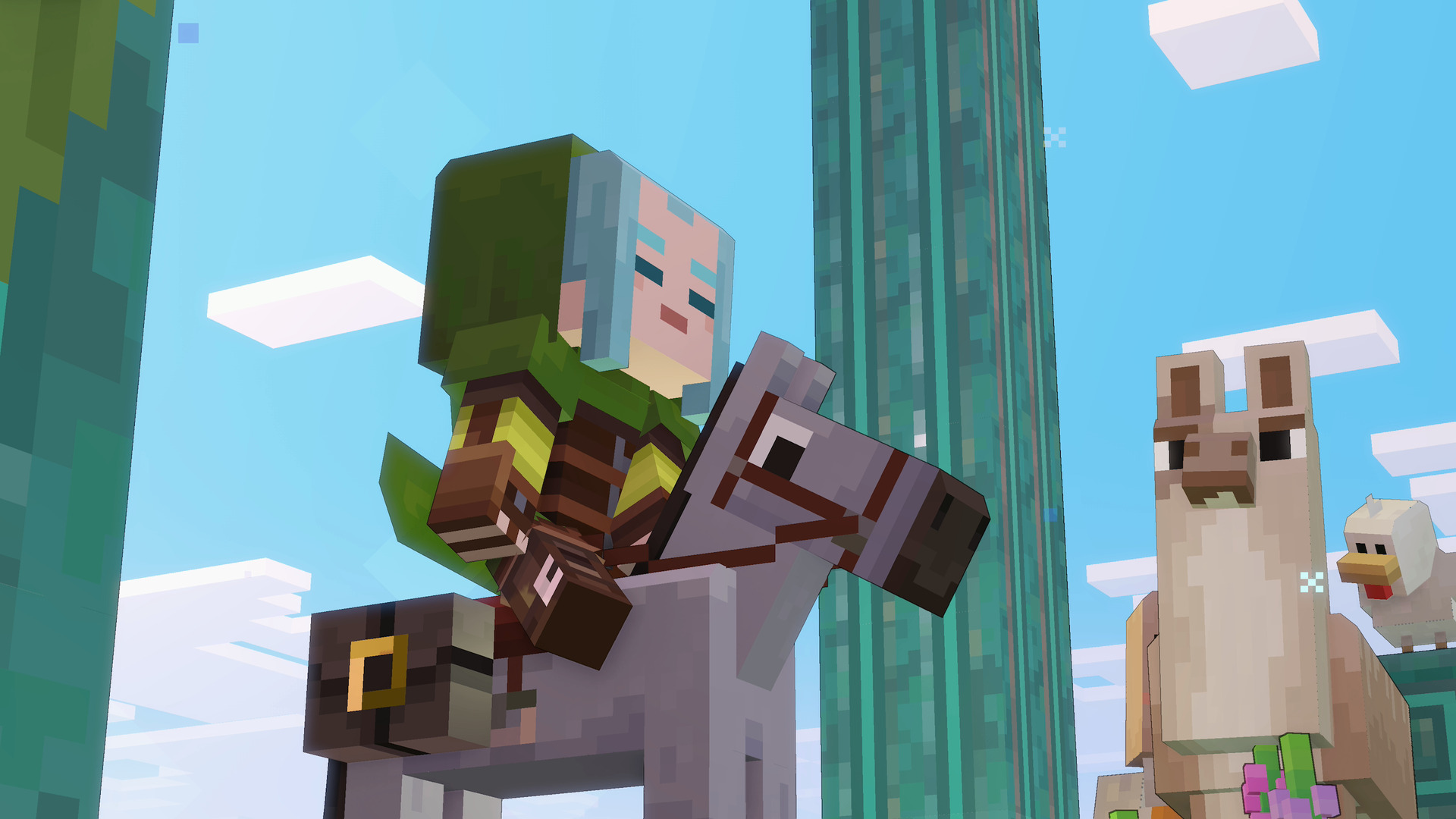
Overall, the moment to moment action in PvP is quite fun. There is always something for everyone to do that spans a wide gamut of different game play styles. If you don’t like combat, try building. If you don’t like building, try exploring as there are tons of helpful chests and other things to find amongst the world to help lead your team to victory. It is truly a unique experience that, although it borrows from different games, comes together as something unlike anything I have previously played.
Conclusion
While I would love to see some more depth to everything that surrounds the PvP mode, such as a progression or ranking system, the gameplay it provides is very fresh and rewarding. It’s also worth noting there is a Marketplace where you can buy cosmetic items, although the store is quite empty in its pre-launch state. There are ways, in game, to earn cosmetics as well, such as the “Lost Legends & Myths” mode mentioned earlier, but, at the time of review, the balance between the two is unknown.
In the end, Minecraft Legends is an impressive package with a lengthy campaign and a truly unique PvP experience. It stays true to the Minecraft aesthetic, although it also offers some very nice lighting effects thanks to its time of day system which also has game play implications since the Piglins are more aggressive at night. It also stays true to the Minecraft core principals, offering ways to mine for minerals, while providing that creative spark not only through building, but also through strategizing.
You can find Seasoned Gaming’s review policy here
We want to thank Xbox for providing a code of Minecraft Legends and the opportunity to play with Mojang Studios for our review!




